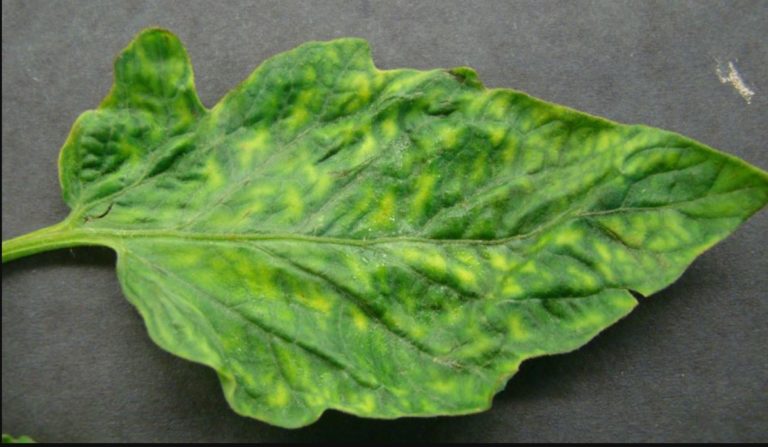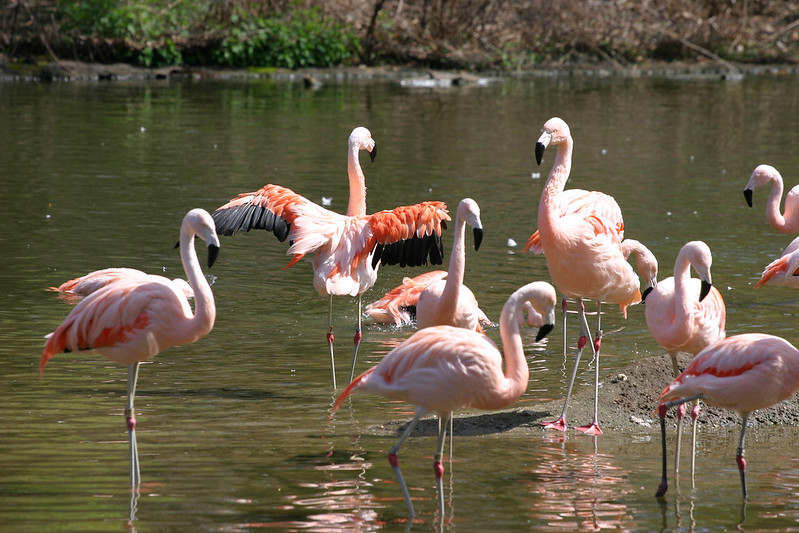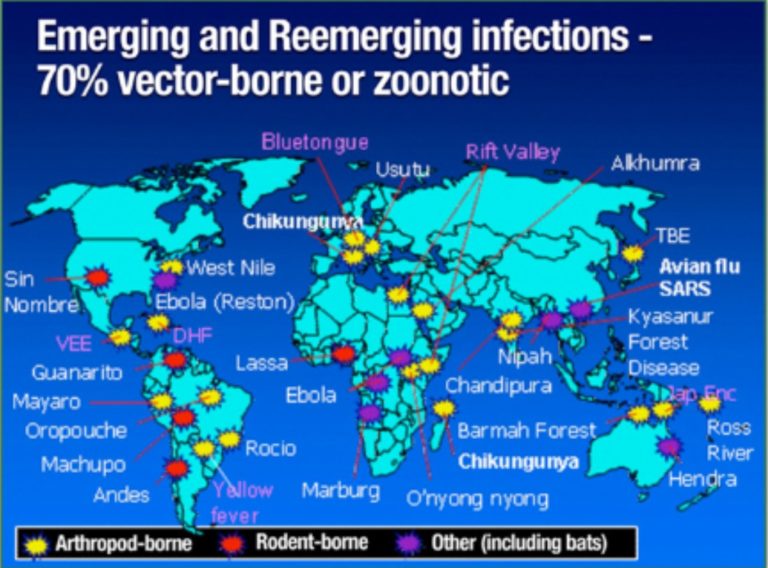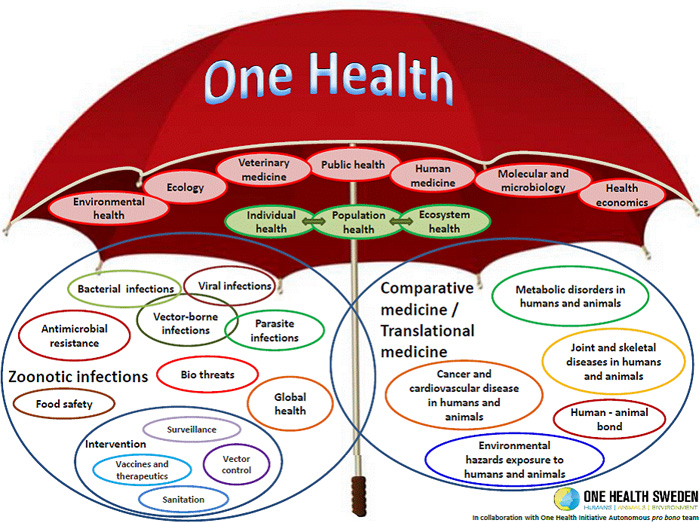COVID-19 is neither the first nor the last of major epidemics and pandemics. The impact of this infectious outbreak has led to huge ratcheting up of research and funding for therapeutics and vaccines to get a handle on this coronavirus. And with infections and deaths in the millions, this is absolutely needed.
But the question becomes what commitment, financial and otherwise, is left to look to the future and get the necessary information and operational capability to head off, or better contain, what might come next. Considering that resources are finite, that in the coming days, infectious disease investment fatigue is likely to set in, the issue is how to best keep the focus.
There are at least three avenues that can be seen as reinforcing each other although each separately claims the attention of national, international leaders, academicians, and development experts.
To Address Future Pandemics:
(1) Virus Mapping
There is a case to be made that worldwide, viruses pose the greatest danger to humankind. While our knowledge has been increasing there is still much unknown. This is why there has been advocacy to undertake a global catalog of viruses, the vocal proponents of which are those committed to the Global Virome Project (GVP).
The idea is to gather information on the ground and analyze in the laboratory the many unknown viruses that potentially could do grievous harm to humans. To understand why the case is made for the GVP, a bit of perspective is helpful.
Most human diseases come from three main sources of pathogens.
Parasites were first identified long ago, in Egypt, possibly around 1,500 B.C., and were seen to cause malaria, filariasis, sleeping sickness, and river blindness.
Bacteria, first identified around 1665 by Dutch scientist Antoni van Leeuwenhoek, can result in cholera, typhoid, TB, syphilis.
Viruses, by comparison, were first identified much more recently, in a tobacco plant around 1886, by Adolph Meyer, a German agricultural chemist. Subsequently, the virus was found to be infecting humans with Yellow Fever and resulting in the first vaccine in 1927-28 for that disease.

The known list of infectious diseases caused by viruses includes polio, smallpox, rabies, hepatitis, Ebola and influenzas including SARS, and now its offshoot, SARS-CoV-2, commonly referred to as COVID-19.
Certainly viruses, but all three pathogens that spread infection to humans are affected by environmental factors.
Diseases transmitted by ticks or mosquitos, like Lyme disease or Zika, are extremely sensitive to fluctuations in temperature, humidity, and rainfall. Other viral diseases are transmitted by bats, civets, primates, and birds, each of whose natural habitat is severely affected by massive human incursion and the changes to the landscape.
The number of viruses is astounding. Viruses are assigned “families” by their size, shape, and other characteristics. From the 25 or so viral families affecting humans, only a mere 263 viruses are known. In comparison there are an estimated 1.67 million unknown viral species in mammals and birds, these being the principal carriers of infection to humans. Focusing only on those that are the most likely threats, we are looking at roughly between 600,000-800,000 such viruses as potential future culprits.
This brings us back to the Global Virome Project (GVP). The idea is to create an atlas of viruses both in terms of type and location.
The global GVP had its formal launch in 2018 at the Prince Mahidol Awards Conference in Bangkok. Thailand and the People’s Republic of China expressed intentions to begin the fieldwork, building on earlier efforts by the U.S. Agency for International Development. China’s interest was welcomed because virtually all deadly influenza viruses for the last fifty years originated in China, or possibly elsewhere in Asia, as this region is heavily populated and suffers from growing disruption of the natural habitats of bats, birds, civets, and other likely virus hosts.
As to the GVP effort, depending on when and who you ask, the price tag has ranged from $4.0 billion for nearly full coverage to $1.20 billion for a more targeted initial phase over ten years. Proponents argue that the GVP complements all the other infectious disease efforts underway or planned. Among the most active advocates are the EcoHealth Alliance and its President Peter Dazsak and Dennis Carroll who led USAID’s program.
Some critics see it otherwise.
Michael Osterholm, a member of the Biden COVID-19 Advisory Board who also heads the Centre for Infectious Disease Research and Policy at the University of Minnesota and is a frequent contributor to CNN, is known to have been a skeptic. He has argued that humanity lacks weapons for the viral threats it already faces and uncovering information that nobody can practically use will distract from existing challenges. At that point, COVID-19 wasn’t yet a pandemic, and this is how he put it in the Financial Times early last year:
“The viral hunter mindset sounds exciting, like something from a movie. There’s an outbreak, you get a helicopter in, take blood, and turn up the next day with a vaccine. But’s that’s science fiction…We already have viruses like MERS, SARS, Zika and Nipah that we don’t have countermeasures for.”
Given the impact of COVID-19 over the last 12 months it is possible Osterholm and other doubters may be revisiting their position on GVP.
(2) Pandemics Preparedness
With the uncontrolled spread of the pandemic, attention by virtually all countries has been on finding ways to track, control, treat, and vaccinate. Trillions have already been spent by countries, the private sector, and international organizations in this effort. Costs in morbidity, mortality, economic losses, and social cohesion, are astronomical and well documented and need not be repeated here.
So, what has been the response?
At the global level, in June 2020, multiple partners initiated a multi-billion dollar effort to develop tools and create equitable access to COVID-19 testing, treatments, and vaccines, namely the “Access to Coronavirus Tool-ACT Accelerator”.
Pledges were made. Some fulfilled, but others were not and in any case, billions more will be required in 2021. The good news is that there is now a movement from planning to concrete action. An ACT-Accelerator press release on December 18, 2020, announced the following:
“Today’s announcements on deals and dose-sharing mean COVAX (the vaccine pillar) can plan for the first deliveries of vaccines in the first quarter of 2021, with the first tranche of doses – enough to protect health and social care workers – delivered in the first half of 2021 to all participating economies who have requested doses in this timeframe. This would be followed by further delivery of doses to all participants in the second half of the year – targeting the supply of doses equaling up to 20% of participants’ populations (or a lower amount if requested by the participant) by the end of the year. Additional doses to reach higher coverage levels will then be available in 2022. All deliveries are contingent upon several factors, such as regulatory approvals and country readiness.”
The efforts by national, bilateral, academic researchers, private entity and multilateral organizations providing both a technical and financial response in this one year of COVID-19, have been unparalleled in comparison to any previous health challenges over the last fifty years.
By comparison, HIV and malaria have cumulatively had greater financing and suffered from higher mortality, but not occurring within such a short timespan. Far too numerous to list, suffice to say the World Bank, regional multilateral financial institutions, the European Union, bilateral assistance programs, and grant providers like the Melinda & Bill Gates Foundation, as well as many others, were and are doing common cause.
(3) A Sustained Focus on One Health
One health is the collaborative, multisectoral, multidisciplinary approach to seek optimal health outcomes, taking as a basis the interconnection between people, animals, plants, and a shared environment. The beginnings of the concept are attributed to a German physician, Rudolph Virchow, in the 19th century who coined the term “zoonosis”. The idea remained on a slow burn for a century and only took off with an emergency at the Bronx zoo in New York, in August 1999, when a number of birds, including a couple of Chilean Flamingoes, were killed by an unknown disease.
When some elderly people fell ill, the zookeeper felt her staff threatened and decided to investigate. It was first thought to be the mosquito-borne Saint Louis encephalitis (SLE) virus but a lab analysis carried out at U.S. Army Medical Research Institute of Infectious Diseases (USAMRID) – and not the CDC – determined that it was, in fact, the West Nile virus, which had never before been seen in the Western Hemisphere.
This episode acted as a wake-up call for scientists who realized the gravity of the CDC’s inadequacy: It didn’t have the right testing materials to identify a virus that hadn’t already appeared in America and would therefore be unable to identify the source of a foreign epidemic or viral agent of bioterrorism landing on U.S. soil.
Since then, the One Health concept is finding increasing acceptance. Scientists have now determined that over two-thirds of emerging human pathogens – whether parasites, bacteria, or viruses – come from animals, as is highly likely the case with COVID-19.
“The pandemic has shown us that the veneer of civilization is very thin,” says Laura Kahn, physician and co-founder of the One Health Initiative. “Any kind of disruption, and suddenly you see things as mundane as toilet paper become an existential threat.”
Indeed, our knowledge of One Health is growing and current One health information is readily accessible at the Home – One Health Initiative website. That said, the image below captures the breadth and depth of this powerful concept:
There are many examples of proof of concept. Indeed, during the past decade, leading national and international global health individuals, groups, organizations, and governmental bodies have been ready to express their appreciation of this interdisciplinary and transdisciplinary approach to public health and clinical health advancement.
However, because there are so many interests with strongly embedded education and training priorities, backgrounds, and resistance to change, one health has been considered (by some) as too complicated. Further, in today’s sectoral silos, and emphasis on specialization, it has not yet clearly become any one discipline or research institution’s highest priority.
This may be changing because of COVID-19. In 2020, there were renewed and new interest and investments by the United States, China, and the European Union. On January 12, 2021, addressing the One Planet Summit, FAO Director-General QU Dongyu stated “The COVID-19 pandemic has highlighted the close links between human, animal and environmental health” and signaled strong FAO support “to the establishment of the One Health High Expert Council, stressing the need to address inequalities in health, as “there can be no health security if vulnerable in the rural area are left behind.”
Much like those not convinced of the benefit of the Global Virome Project, those who were unwilling to make the effort to embrace and engage a One Health approach may be rethinking.
The Way Forward: How to Contain Pandemics
In response to the 2014-2016 Ebola outbreak in West Africa, in 2019 the Global Preparedness Monitoring Board (GPMB) was established to provide an authoritative, independent, comprehensive, and inclusive overview of the state of preparedness for health crises.
Today is #InternationalDayofEpidemicPreparedness pic.twitter.com/Nd35Rt4qtk
— The Global Preparedness Monitoring Board (@TheGPMB) December 27, 2020
In its second report on September 14, 2020, the GPMB argues the following:
“Never before has the world been so clearly forewarned of the dangers of a devastating pandemic, nor previously had the knowledge, resources and technologies to deal with such a threat. Yet, never before has the world witnessed a pandemic of such widespread and destructive social and economic impact. The COVID-19 pandemic has revealed a collective failure to take pandemic prevention, preparedness, and response seriously and prioritize it accordingly… advances have [also] created unprecedented vulnerability to fast-moving infectious disease outbreaks by fueling population growth and mobility, disorienting the climate, boosting interdependence, and generating inequality. The destruction of tropical rain forests has increased the opportunities for transmission of viruses from wild animals to humans.”
In sum, to successfully predict, prevent and contain pandemics, we need it all: A greater knowledge of unknown viruses that are potentially highly dangerous to humans, including virus mapping; more and sustained research into pandemics, including the development of appropriate tools and innovations to share as we are now doing with COVID-19; and recognition of the importance of the interface between humans, animals, and the environment – in other words, using a One Health approach to virus mapping and pandemics preparedness.
As we race against the next pandemic, we must gather greater actionable acceptance by the science, policy, and investment community to do it. Given the trillions of dollars and deep suffering that any one pandemic can cause, the price for investing for the short and long run is simply a no-brainer.
Dr. Noah Seifman DVM, contributed as principal advisor for this article.
EDITOR’S NOTE: The opinions expressed here by Impakter.com columnists are their own, not those of Impakter.com. — In the Featured Photo: Flamingoes at the Bronx Zoo, where the exotic birds were struck by the West Nile Virus in 1999. Photo by Steven Tom, Flickr












